
The International Conference on Image Processing (ICIP), sponsored by the IEEE Signal Processing Society, is the premier forum for the presentation of technological advances and research results in the fields of theoretical, experimental, and applied image and video processing. ICIP has been held annually since 1994, brings together leading engineers and scientists in image and video processing from around the world. Visit website.
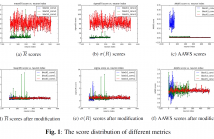
- Read more about TOWARDS THINNER CONVOLUTIONAL NEURAL NETWORKS THROUGH GRADUALLY GLOBAL PRUNING
- Log in to post comments
Deep network pruning is an effective method to reduce the storage and computation cost of deep neural networks when applying them to resource-limited devices. Among many pruning granularity, neuron level pruning will remove redundant neurons and filters in the model and result in thinner networks. In this paper, we propose a gradually global pruning scheme for neuron level pruning. In each pruning step, a small percent of neurons were selected and dropped across all layers in the model.
WangzhengtaoICIP.pdf
- Categories:
 6 Views
6 Views
- Read more about Circle Detection by Arc-support Line Segments
- Log in to post comments
Circle detection is fundamental in both object detection and high accuracy localization in visual control systems. We propose a novel method for circle detection by analysing and refining arc-support line segments. The key idea is to use line segment detector to extract the arc-support line segments which are likely to make up the circle, instead of all line segments. Each couple of line segments is analyzed to form a valid pair and followed by generating initial circle set.
- Categories:
 110 Views
110 Views- Read more about UNSUPERVISED DOMAIN ADAPTATION WITH JOINT SUPERVISED SPARSE CODING AND DISCRIMINATIVE REGULARIZATION TERM
- Log in to post comments
- Categories:
 9 Views
9 Views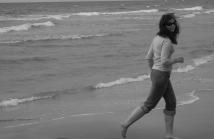
- Read more about Summarization of Human Activity Videos Using a Salient Dictionary
- Log in to post comments
Video summarization has become more prominent during the last decade, due to the massive amount of available digital video content. A video summarization algorithm is typically fed an input video and expected to extract a set of important key-frames which represent the entire content, convey semantic meaning and are significantly more concise than the original input. The most wide-spread approach relies on video frame clustering and extraction of the frames closest to the cluster centroids as key-frames.
- Categories:
 12 Views
12 Views
- Read more about Multimodal Stereoscopic Movie Summarization Conforming to Narrative Characteristics
- Log in to post comments
Video summarization is a timely and rapidly developing research field with broad commercial interest, due to the increasing availability of massive video data. Relevant algorithms face the challenge of needing to achieve a careful balance between summary compactness, enjoyability and content coverage. The specific case of stereoscopic $3$D theatrical films has become more important over the past years, but not received corresponding research attention.
- Categories:
 10 Views
10 Views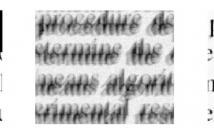
Blind image deblurring (BID) is an ill-posed inverse problem, usually addressed by imposing prior knowledge on the (unknown) image and on the blurring filter. Most of the work on BID has focused on natural images, using image priors based on statistical properties of generic natural images. However, in many applications, it is known that the image being recovered belongs to some specific class (e.g., text, face, fingerprints), and exploiting this knowledge allows obtaining more accurate priors.
- Categories:
 8 Views
8 Views- Read more about Color Reduction based on Categorical Perception
- Log in to post comments
This paper addresses the problem of color reduction which aims at computing a compact representation of a color coordinate
system. By capitalizing on studies that have suggested the existence of eleven focal colors, we conducted subjective
experiments which exploited the categorical nature of human color perception. This paper describes a novel color reduction
- Categories:
 6 Views
6 Views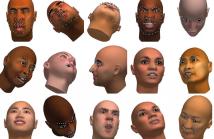
Head pose estimation can help in understanding human behavior or to improve head pose invariance in various face analysis applications. Ready-to-use pose estimators are available with several facial landmark trackers, but their accuracy is commonly unknown. Following the goal to find the best landmark based pose estimator, we introduce a new database (called SyLaHP), propose a new benchmark protocol, and describe and implement a method to learn a pose estimator on top of any landmark detector (called HPFL).
Poster.pdf
- Categories:
 23 Views
23 Views- Read more about Progressive Communication for Interactive Light Field Image Data Streaming
- Log in to post comments
Light field (LF) imaging captures multiple intensities and directions of light per pixel during acquisition in a 3D scene, so that novel images of different viewpoints or focal points can be synthesized. However, transmitting all LF data before viewer observation incurs a large startup delay. To avoid such delay, we propose a new interactive LF streaming framework, where a client periodically requests viewpoint images, and in response a server synthesizes and transmits each requested image as a carefully chosen sparse linear combination of sub-aperture images.
- Categories:
 27 Views
27 Views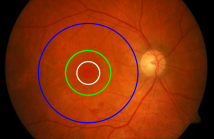
- Read more about AUTOMATIC DELINEATION OF MACULAR REGIONS BASED ON A LOCALLY DEFINED CONTRAST FUNCTION
- Log in to post comments
We consider the problem of fovea segmentation and develop
a technique for delineation of macular regions based on the
active-disc formalism that we recently introduced. The outlining
problem is posed as one of the optimization of a locally
defined contrast function using gradient-ascent maximization
with respect to the affine transformation parameters
that characterize the active disc. For automatic localization
of the fovea and initialization of the active disc, we
use the directional-derivative-based matched filter. We report
- Categories:
 4 Views
4 Views